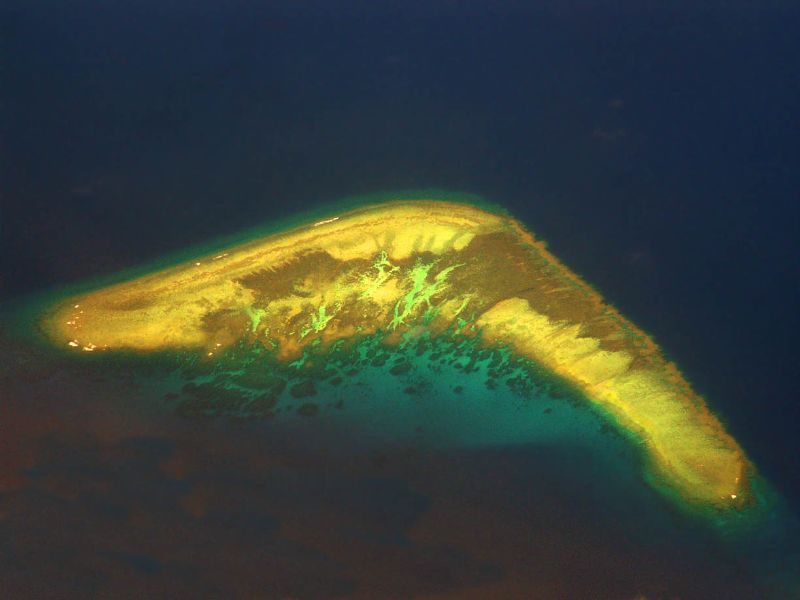China Takes Steps To Control South China Sea
The CIP’s J. Berkshire Miller discusses Beijing’s next potential moves in the South China Sea in a piece from Al Jazeera America.
This article was originally published via Al Jazeera America
[opinion/analysis] Beijing’s new land-reclamation strategy in the South China Sea has been ringing alarm bells in the region and has prompted the U.S. to accuse China of attempting to force its way to de facto control of disputed waters.
Several high-definition satellite images surfaced this month of China’s land reclamation and construction on Mischief Reef in the Spratly Islands, whose sovereignty is disputed by China, the Philippines, Taiwan and Vietnam. The Center for Strategic and International Studies, a think tank based in Washington, D.C., has released several photos chronicling Beijing’s rapid expansion of and infrastructure construction on Mischief Reef, Fiery Cross Reef and several other reefs in the Spratlys. The Philippines and Vietnam, two of the most outspoken claimants in the South China Sea, have blasted Chinese land-reclamation activities as a tantamount to the creation of military outposts. Beijing has retorted that the moves fall in line with safeguarding its sovereignty.
When asked earlier this month about the island construction, President Barack Obama said, “Where we get concerned with China is where it is not necessarily abiding by international norms and rules and is using its sheer size and muscle to force countries into subordinate positions.” Admiral Harry Harris, the commander of the Pacific Fleet, put the matter more bluntly, remarking that China “is creating a great wall of sand with dredges and bulldozers.”
China’s land reclamation projects are likely to continue over the coming months, creating worries about military plans. The projects could permit Beijing to utilize more tools to push its influence in the South China Sea, such as long-range radar, advanced missile systems and eventually aircraft. The Chinese appear to be constructing an airfield on the disputed Fiery Cross Reef despite protests from Washington, its allies and partners. This could be the advance that would enable Beijing to assert its control in the skies around the disputed sea.
The decision to create an air-defense zone remains a delicate political choice for Beijing, since it would trigger a severe diplomatic backlash from Southeast Asian nations and the United States.
Specifically, these moves lay the foundation for China’s potential unilateral declaration of an air defense identification zone (ADIZ) in the South China Sea. This would essentially oblige aircrafts flying in the zone to accommodate a number of Chinese-imposed rules, including the identification of flight plans, the presence of any transponders and two-way radio communication with Chinese authorities. Earlier this year, there were reports that Chinese defense officials have begun drafting plans for an ADIZ in the South China Sea. Beijing pushed back against this notion shortly after these reports, claiming that “the Chinese side has yet to feel any air security threat from [Southeast Asian] countries and is optimistic about its relations with the neighboring countries and the general situation in the South China Sea region.”
Nevertheless, China maintains that it is well within its rights to impose an ADIZ in its sovereign territory if and when it chooses. Beijing is essentially positioning itself to enforce control over the area’s skies. Although it hasn’t officially declared an ADIZ there, such a step is less important than the leverage its potential imposition affords. It will be kept in the back pocket should tensions rise or if China feels that its claim is threatened. China is essentially conditioning an ADIZ on the behavior of other claimants in the South China Sea and using the threat of its imposition as additional leverage.
This approach should not surprise anyone in the region. In November 2013, Beijing unilaterally announced an ADIZ in the East China Sea over a significant amount territory, including the Senkaku Islands, claimed and administered by Japan. China’s ADIZ in the East China Sea overlapped with an existing Japanese ADIZ. To make matters worse, declaring the zone stoked tensions with South Korea because the ADIZ covered Ieodo, a reef claimed by Beijing and Seoul. Japan and the U.S. strongly condemned the East China Sea ADIZ as a provocation. Beijing’s decision to play this card was largely a result of stalled progress on pressuring Japan to acknowledge their dispute over the Senkaku Islands — or the Diaoyu Islands to the Chinese.
How soon might China take the step and declare an ADIZ in the South China Sea? The decision remains a delicate political choice for Beijing, since it would trigger a severe diplomatic backlash from Southeast Asian nations and the United States. Logistically, however, the declaration could come anytime this year. U.S. Admiral Samuel Locklear, head of the Pacific Command, testified this month before Congress that the recent land reclamation allows China “to exert basically greater influence over what’s now a contested area. And it may be a platform if they ever wanted to establish an air defense identification zone.” This gray area gives China the option and leverage of the ADIZ without suffering any of the diplomatic consequences of its imposition.
The views expressed in this article are the author’s own and do not necessarily reflect Al Jazeera America’s editorial policy.
Related posts:
Category: ENVIRONMENT, FOREIGN POLICY & SECURITY, INTERNATIONAL LAW & HUMAN RIGHTS, POLITICS, SOUTH ASIA & ASIA PACIFIC





